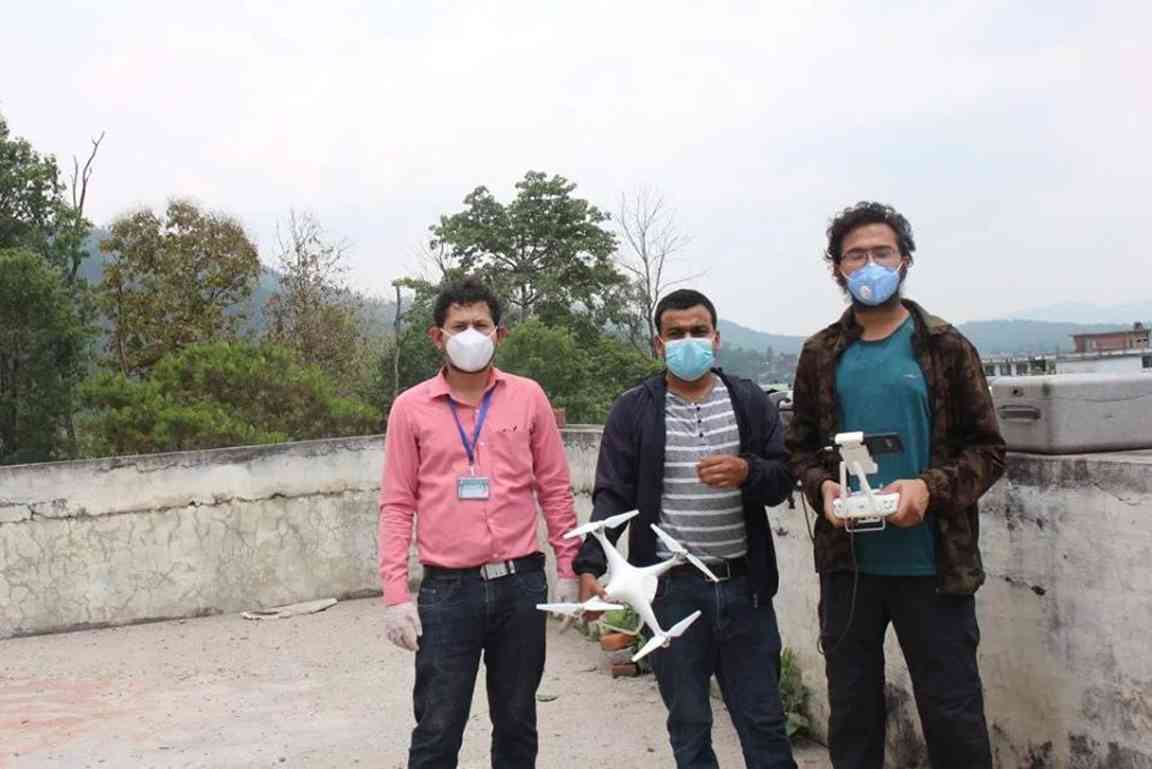Paving the way for building Resilience in Nepal: An initiative to understand and assess risk through the use of frontier technology
This commitment is implemented by the Institute of Himalayan Risk reduction (IHRR). Drones and geospatial technologies will be used to enhance disaster risk assessments and development planning at Hetauda Sub-Metropolitan City, Capital of Bagmati Province in Nepal.
Description
The mission of Institute of Himalayan Risk Reduction (IHRR) is to provide disaster risk reduction services in the communities of Nepal and other parts of the world. IHRR is also part of U-INSPIRE Nepal. This commitment aims to use drones, geospatial and other frontier technologies for enhancing disaster risk assessments and development planning, thus contributing to sustainability.
To reach the goal of this commitment, IHRR is conducting an Aerial Survey using Unmanned Aerial Vehicles (UAVs) in one of the rapidly urbanizing cities of Nepal, Hetauda Sub-Metropolitan City in the capital of Bagmati Province - Nepal. This survey aims to capture high-resolution images of the city and develop the Digital Elevation Model (DEM) to carry out a number of risk assessments of the city. This will involve local volunteers and engage them with the application of Science, Engineering, Technology and Innovation (SETI) initiatives to implement the Sendai Framework.
As a result, this commitment will produce 20 community champions (youth and young professionals familiarized with frontier technologies and their use on DRR), knowledge transfer to the Sub-Metropolitan City Office, and a map atlas about hazards, resources and risks.
Did the Sendai Framework change or contribute to changes in your activities/organization? If so, how?
Yes, Sendai Framework has helped in setting up a basic framework to set our objective and activities for sustainable risk reduction.
IHRR believes in Understanding the Disaster Risk. Besides, the engagement of Youth and Young professionals ensures effective, and proactive participation in the preparedness, preparation, response, and recovery phases of the disaster cycle. Similarly, our focus is on the development of institutional capacities to strengthen governance in order to manage disaster risk.
What led you to make this commitment/initiative?
What was your position before making this Voluntary Commitment / prior to the Sendai Framework?
The Coordination and Collaboration approach of our organization with the local government sets this initiative. We are committed to support and strengthen the institutional capacities of the government and organization to respond with potential hazards.
We were only a research organization in the past. So, it is the time to utilize the learnings and expertise of the researchers and professionals towards the sustainable risk reduction.
Deliverables and Progress report
Deliverables
Deliverables are the end-products of the initiative/commitment, which can include issuance of publications or knowledge products, outcomes of workshops, training programs, videos, links, photographs, etc.
American GeoPhysical Union (AGU) 2020
The application of high resolution datasets was visualized in the form of the video.
Porgress report
The team capacitated 10 Local Volunteers for the drone deployment.
The technical laid out Ground Control Points (GCPs) all over the Metropolitan city and started collecting aerial imageries.
The team installed 45 GCP at different locations of the city and flew drones for 26 days over 110 km2 area capturing 16244 Images using a single Phantom.
Hetauda is the capital of Bagmati province situated 86 km south-west of Kathmandu and another rapidly urbanizing city of the country. With the lead of the Institute of Himalaya Risk Reduction, project Design, and overall supervision from Nepal Flying Labs, data collection by pilots from DroNepal and ING Nepal, GIS & Mapping service provider NAXA and Nepal Engineering Association of Bagmati Province) came together to map the city during this lockdown. The Mayor of the Hetauda Sub-metropolitan City inaugurated the project.
Organizations and focal points
Implementing Organization(s)
Focal points
Partners
